Economy

Manufacturing Economy Remains Positive for Steel
Written by Peter Wright
March 6, 2018
Economic indicators of manufacturing activity remain strong and continue pointing to good demand for steel at least through mid-year.
This report summarizes seven data sources that describe the state of manufacturing in the United States. We have reported on most of these separately in our Steel Market Update publications, and therefore will be brief in this summary. We don’t expect these data sources to all point in the same direction. Our intent in summarizing them in one document is to provide a consensus of the state of this critical steel consumption sector. Based on American Iron and Steel Institute estimates of steel mill shipments by market classification, almost 50 percent of the steel consumed in the U.S. is manufacturing-oriented. This breaks down to about 27 percent in ground transportation including infrastructure, 9 percent in machinery and equipment, 5 percent in appliances, 4 percent in defense and about 4 percent in containers.
![]() The Industrial Production Index: Figure 1 shows the IP index since January 2007 with the year-over-year growth. The three-month moving average (3MMA) had negative growth every month from October 2015 through December 2016 as shown by the brown bars in Figure 1. January 2017 was the first month of positive growth in the 3MMA since August 2015. Growth continued to be both positive and improving through January 2018. Manufacturing capacity utilization improved from 75.21 percent in January 2017 to 76.35 percent in January 2018 on a 3MMA basis.
The Industrial Production Index: Figure 1 shows the IP index since January 2007 with the year-over-year growth. The three-month moving average (3MMA) had negative growth every month from October 2015 through December 2016 as shown by the brown bars in Figure 1. January 2017 was the first month of positive growth in the 3MMA since August 2015. Growth continued to be both positive and improving through January 2018. Manufacturing capacity utilization improved from 75.21 percent in January 2017 to 76.35 percent in January 2018 on a 3MMA basis.
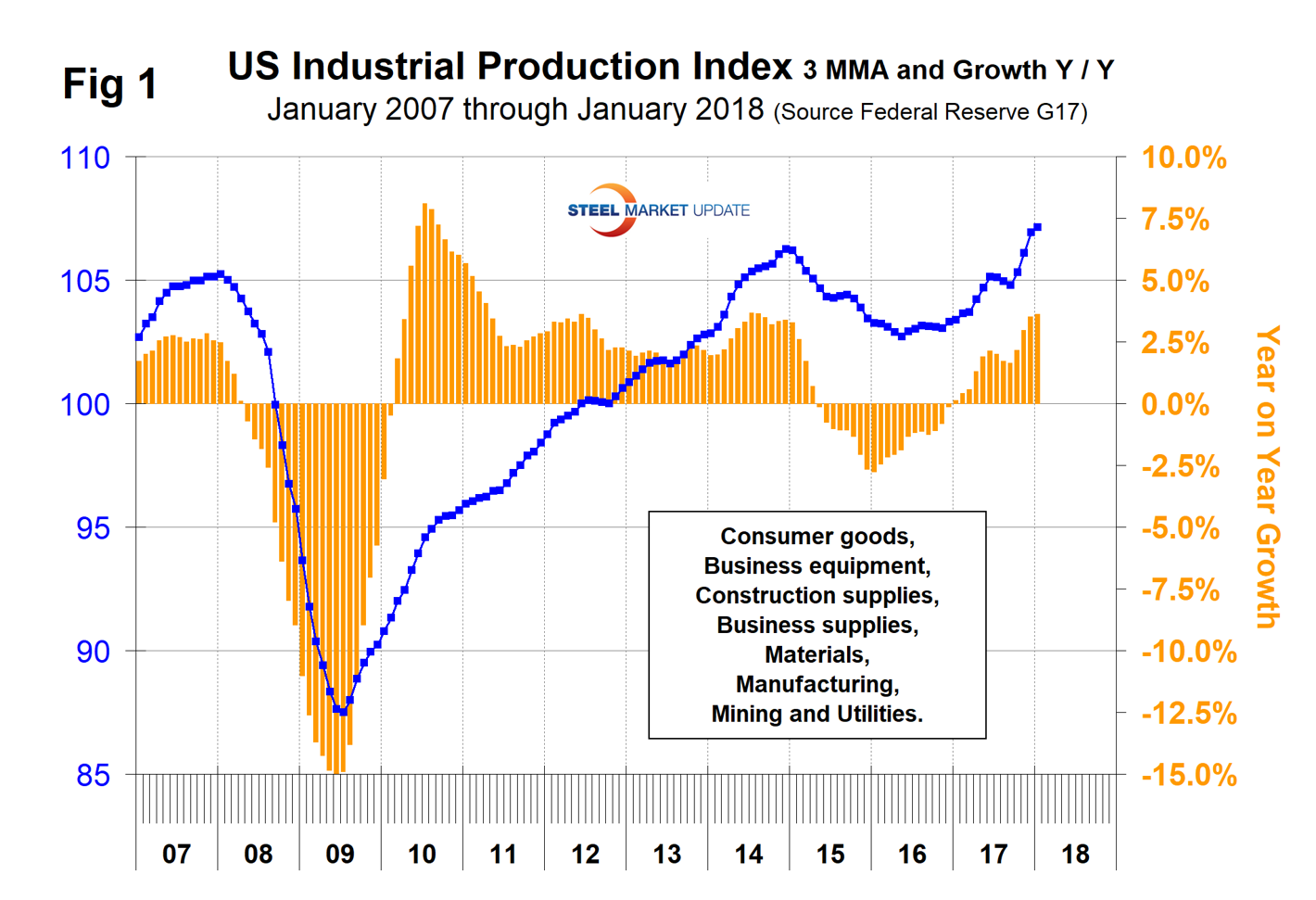
New Orders for Durable Goods: The U.S. Census Bureau announced last week that new orders for manufactured durable goods in January increased by 0.2 percent on a 3MMA basis month over month and were up by 6.5 percent year over year. Figure 2 shows the 3MMA of monthly orders for durable goods since January 2010 and that the percent change year over year was the highest since September 2014.
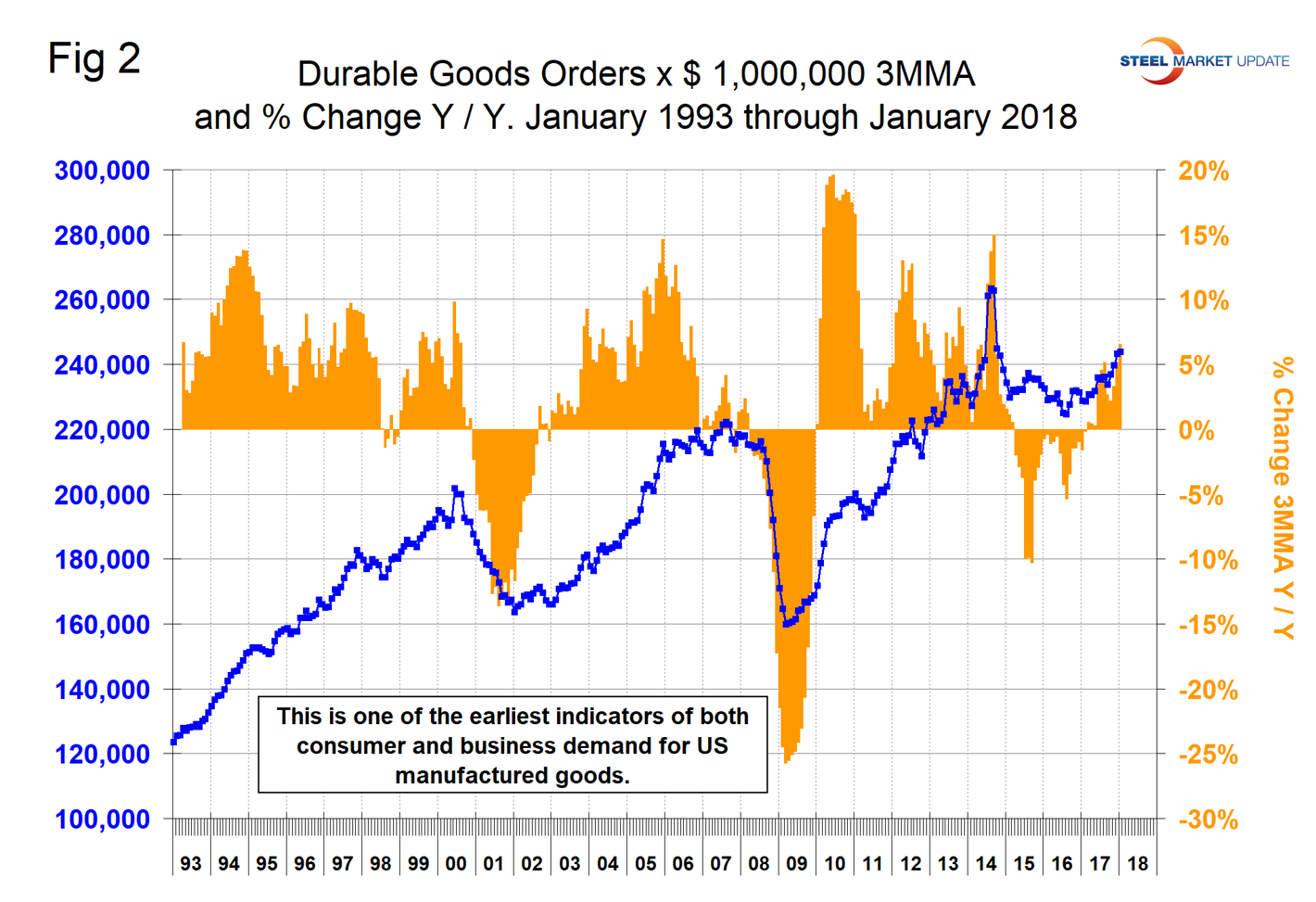
The Durable Goods Portion of GDP: The second estimate of Q4 2017 GDP came in at 2.51 percent annualized growth, which was down from 3.16 percent in Q3. A subcomponent of the quarterly data is durable goods, which is part of the personal consumption calculation. It therefore contains no military hardware or civil aircraft data. This is shown in Figure 3 and, presumably because of the exclusions just mentioned, looks nothing like Figure 2. Except for one quarter, Q1 2017, the durable goods portion of GDP has had positive growth every quarter since Q2 2011.
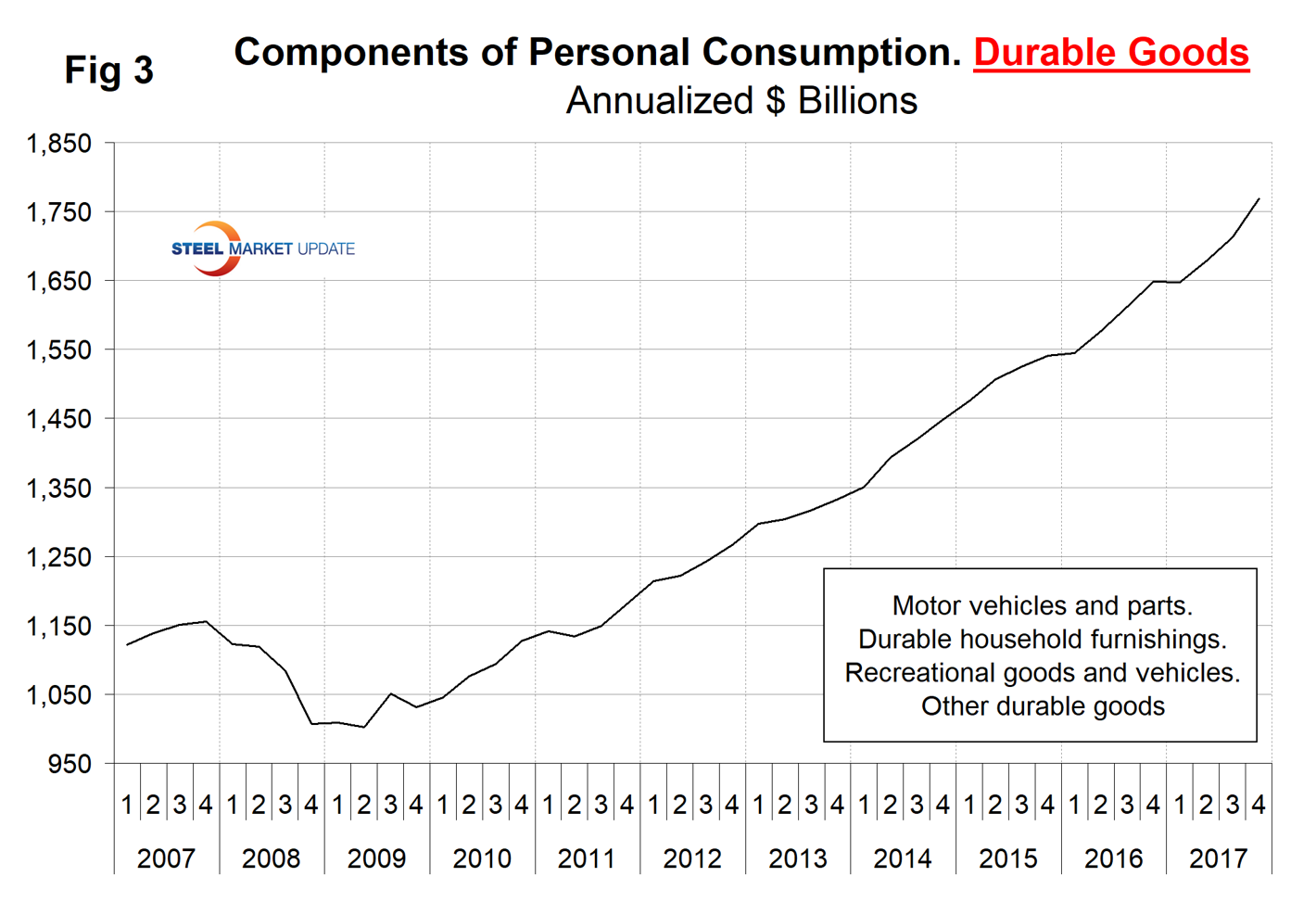
Light Vehicle Production in NAFTA: Our data source has not been updated for January, therefore our comment remains the same as last month. We don’t expect any rapid change in auto assemblies since sales are gradually declining. On a rolling 12-months basis year over year through December, light vehicle production in NAFTA decreased by 3.6 percent. Through December, growth declined for six straight months. These were the first months of contraction since May 2010. There has been a very gradual slowdown in growth for the last three years as indicated by the brown bars in Figure 4. The data source is Ward’s Automotive. We understand that the main hang-up in the NAFTA negotiations revolves around auto parts manufacture and final point of assembly. There is a huge movement of components and subassemblies in both directions across the southern border. Therefore, it is not known whether the Ward’s data exaggerates or deflates the national differentials.
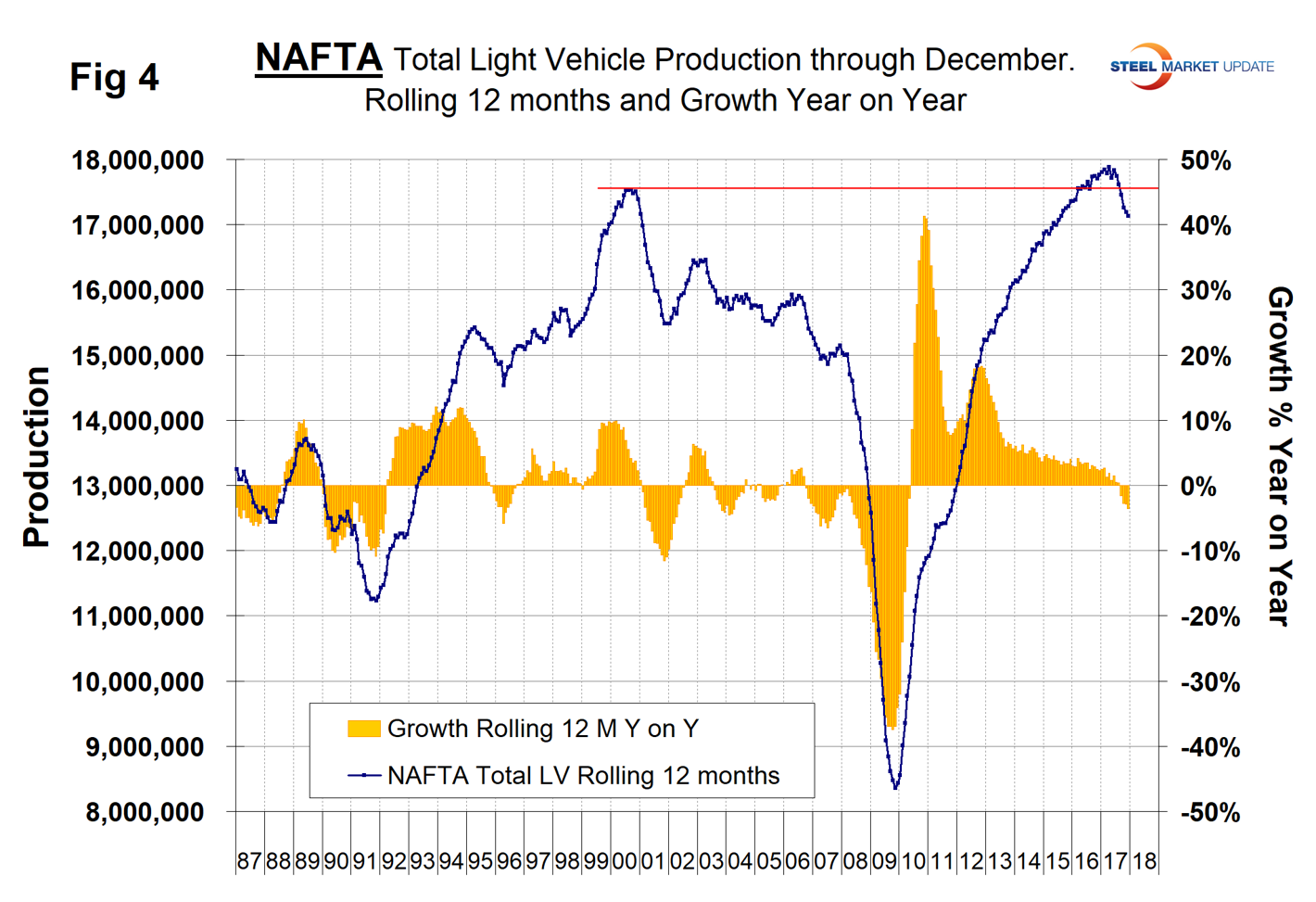
Manufacturing Employment: Manufacturing employment plummeted during the recession and gradually improved from the spring of 2010 through 2014. Growth was flat in 2015 and declined slightly in 2016 when 23,000 jobs were lost during the year. There was a turnaround in 2017 when 196,000 jobs were created, 79,000 of them in the fourth quarter alone (Figure 5). The improvement continued through January 2018, which contributed to a 131,000 gain in jobs in six months August 2017 through January 2018. The motor vehicles and parts subcomponent of manufacturing employment had a net gain of only 2,000 jobs in the 13 months January 2017 through January 2018.
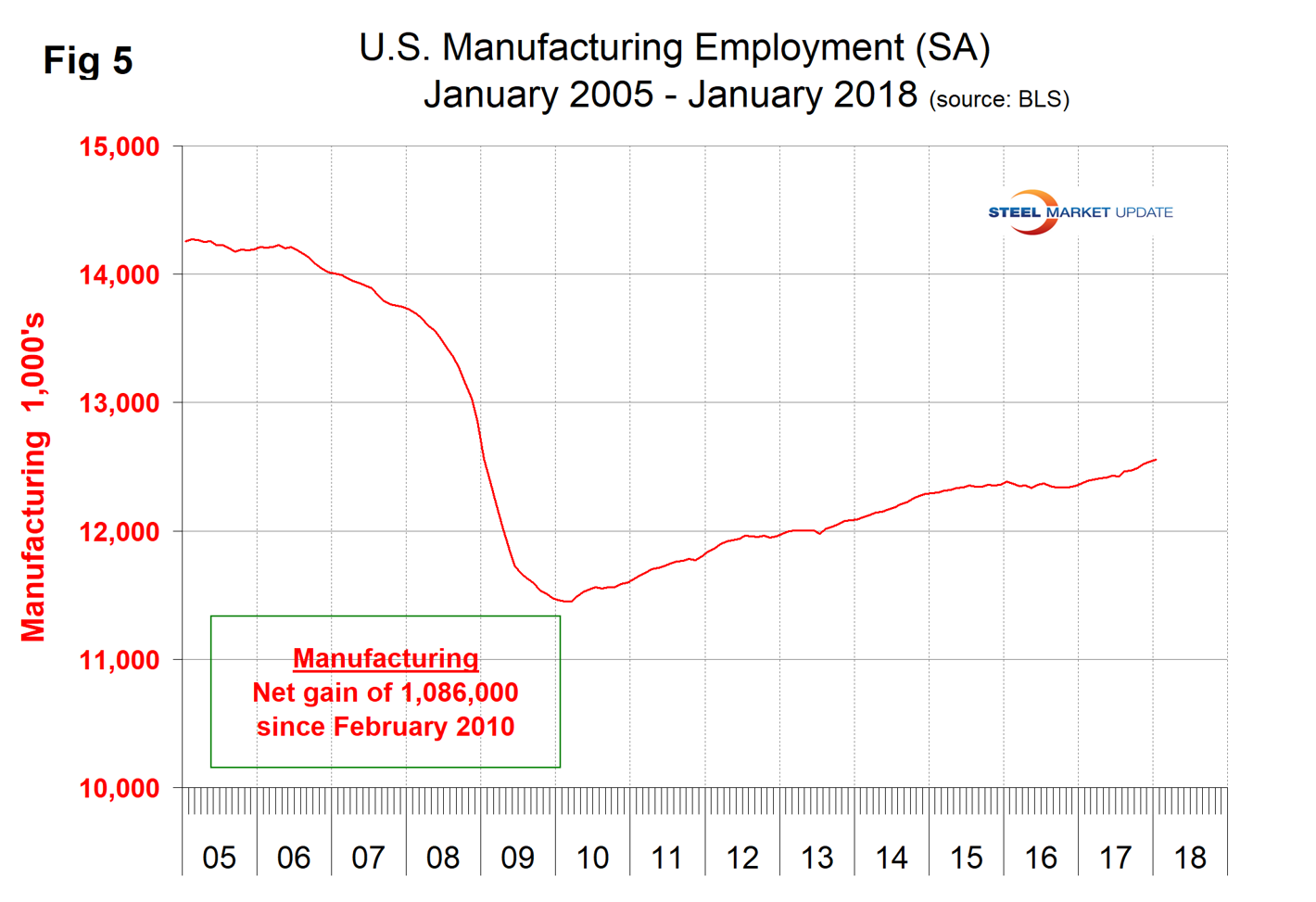
Manufacturing Productivity: The Bureau of Labor Statistics reported that in Q4 2017 manufacturing productivity improved by 1.1 percent year over year (Figure 6). Productivity growth was erratic in 2017, but there has been a gradual improvement for three years.
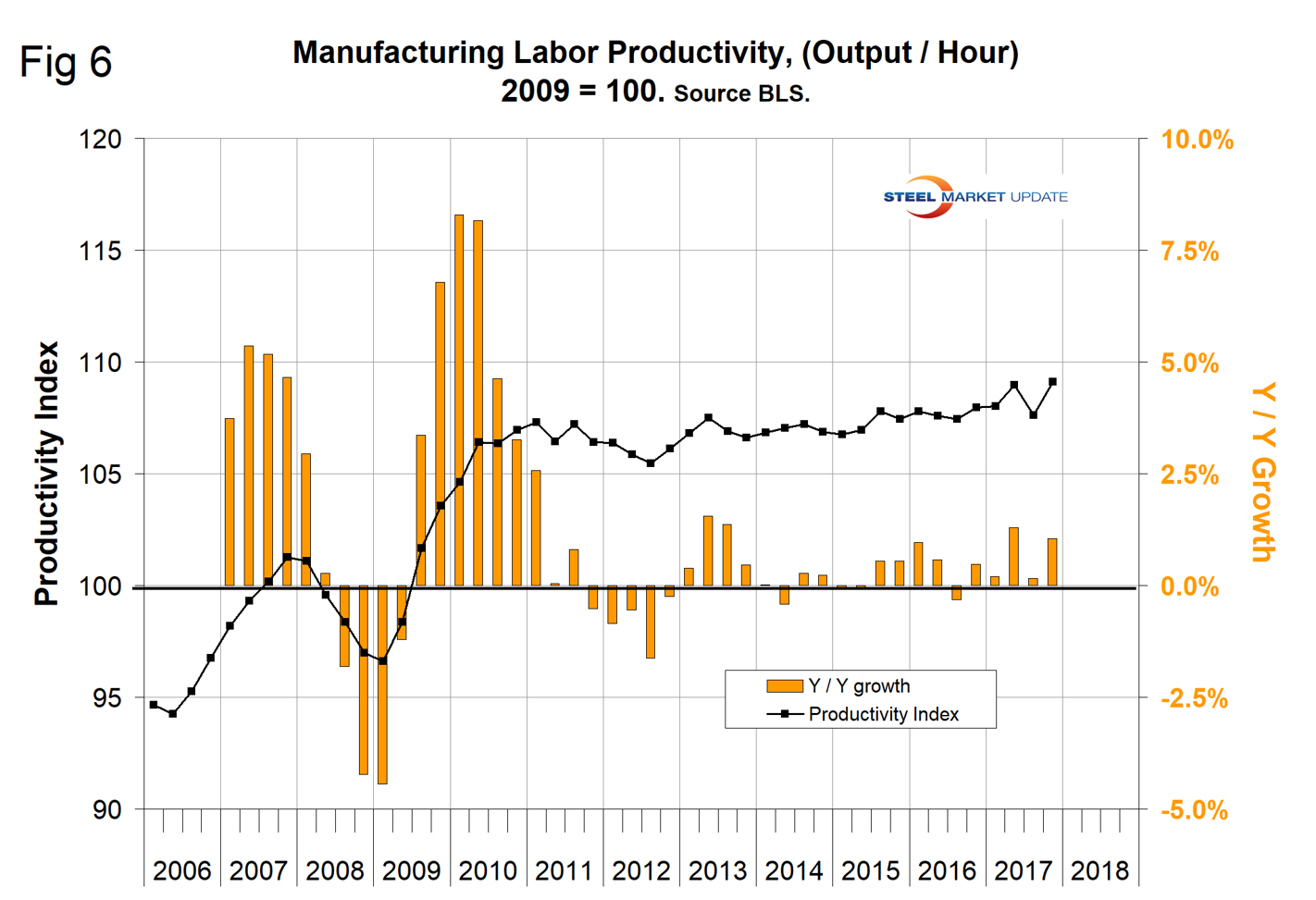
The ISM Manufacturing Index: The Institute for Supply Management’s Manufacturing Index is a diffusion index. ISM states: “Diffusion indexes have the properties of leading indicators and are convenient summary measures showing the prevailing direction of change and the scope of change. An index value above 50 percent indicates that the manufacturing economy is generally expanding; below 50 percent indicates the opposite.” Figure 7 shows the 3MMA of the ISM index from January 1997 through February 2018 with an improving trend since January 2016. In February, the 3MMA of the index at 59.73 was the highest since April 2011.
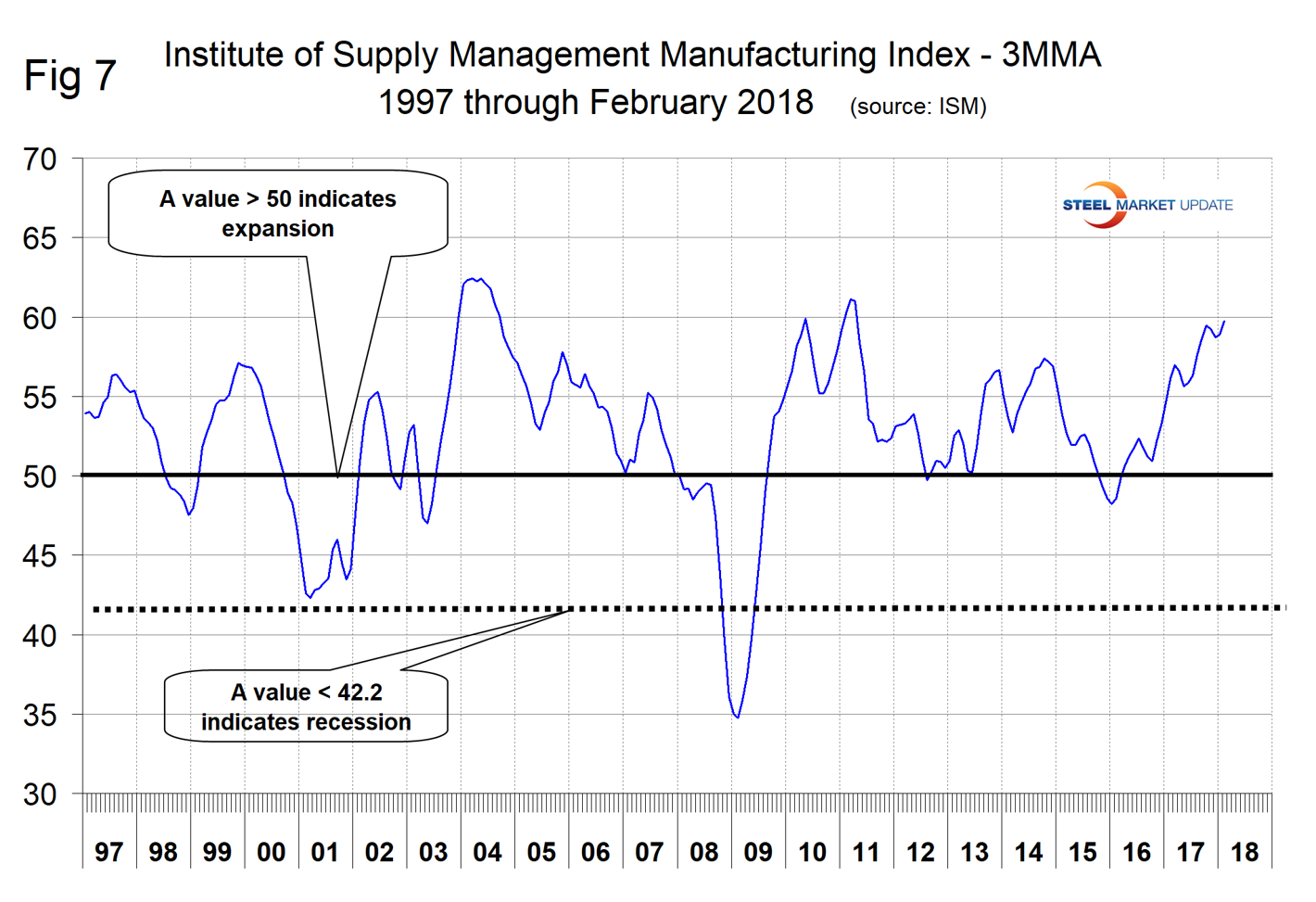
On March 5, the Manufacturers Alliance for Productivity and Innovation summarized as follows: “Buoyed by a widening global economic rebound, a falling dollar and the passage of tax reform, the MAPI Foundation’s current outlook for U.S. manufacturing growth points to the best output performance in more than a decade. Stronger capital spending and export activity have translated into a manufacturing growth forecast of 2.8 percent for the 2018-2021 period, nearly double the 1.5 percent pace projected in our most recent report.”
SMU Comment: Another excellent month for manufacturing indicators. The ISM index, to which we give the most credence, is at its strongest level since April 2011 and signaling expansion. Auto assemblies and supplier industries are slowing in NAFTA, and the U.S. and Canada are losing share to Mexico. Manufacturing added 131,000 positions in the six months August through January and productivity is improving. The industrial production index and new orders for durable goods have positive growth. The net of these seven indicators is very positive and point to a strong first half for 2018.

Peter Wright
Read more from Peter WrightLatest in Economy

Steel exports recovered in May but still historically low
US steel exports rose 10% from April to May but remained low compared to recent years. This came just one month after exports fell to the lowest level recorded in nearly five years.

AISI: Raw steel production ticks up near recent high
The volume of raw steel produced by US mills inched higher last week, according to the American Iron and Steel Institute (AISI). After steadily increasing in April and May, domestic mill output stabilized in early June and has remained historically strong since.

Steel groups welcome passage of budget bill
Steel trade groups praised the passage of the Big Beautiful Bill (BBB) in Congress on Thursday.

Industry groups praise Senate for passing tax and budget bill
The Steel Manufacturers Association and the American Iron and Steel Institute applauded the tax provisions included in the Senate's tax and budget reconciliation bill.

Chicago PMI dips 0.1 points in June
The Chicago Purchasing Managers Index (PMI) slipped 0.1 points to 40.4 points, in June.
